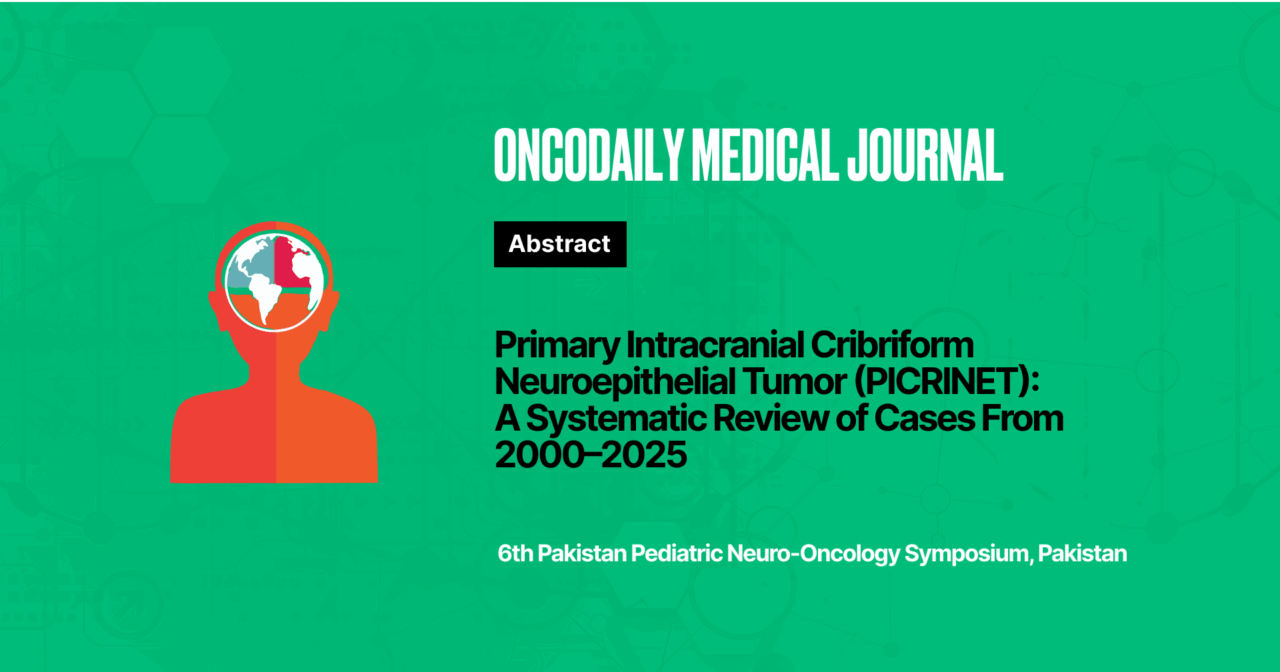Primary Intracranial Cribriform Neuroepithelial Tumor (PICRINET): A Systematic Review of Cases From 2000–2025
Abstract
Introduction: Cribriform neuroepithelial tumor (CRINET) is a newly emerging rare neuroectodermal tumor sharing similarities with atypical teratoid/rhabdoid tumors (AT/RT). To the best of our literature search, there is a lack of compelling evidence documenting primary intracranial cribriform neuroepithelial tumor (PICRINET). The objective is to study the demographics, clinico-radiological presentation, treatment options, and outcomes of PICRINET.
Methodology: A comprehensive literature search was conducted across PubMed and Google Scholar databases per the Preferred Reporting Items for Systematic Reviews and Meta-Analyses (PRISMA) guidelines, covering the studies published between 2000 and 2025. A total of 10 relevant publications were identified. The quality of the included studies was assessed using the Joanna Briggs Institute (JBI) critical appraisal criteria. Descriptive statistical analysis, including measures of central tendency and dispersion, was employed to evaluate the extracted variables.
Results: A total of 18 patients were included, all from the pediatric population, with a mean age of 1.11±0.45 years and a predominance of females (13, 72.2%). Most patients presented with signs of raised intracranial pressure. All lesions were intraventricular, the majority being in the fourth ventricle in 8 (44%). Magnetic Resonance Imaging (MRI) was suggestive of heterogeneous enhancement in 14 (83.3%). On histopathology, neuroepithelial cells were arranged in cribriform strands and ribbons in 16 (88.8%). Immunohistochemistry was suggestive of Ki-67/MIB positivity in 11 (61.1%) cases. Post-operatively, 9 (50%) patients underwent chemotherapy, and 1 (5%) underwent radiotherapy. Mean duration of follow-up was 32.0±33.7 months. Overall, 77.8% were alive without any neurological deficit at last follow-up.
Conclusion: PICRENIT is an intraventricular tumor of toddlers with female predilection. Surgery combined with adjuvant therapy promises a three-year post-treatment survival better than ATRT.
Conflict of Interest: None
Funding: None
Disclosure Statement: This abstract represents preliminary findings from a systematic review that is currently in progress. The current author list includes contributors up to the data collection and initial analysis phase. Additional authors will be added to the final manuscript based on substantial contributions to the interpretation, discussion, and drafting of the full article. The completed manuscript is still under development.
License: This article is published under the terms of the Creative Commons Attribution 4.0 International License (CC BY 4.0).
© Haseeb Mehmood Qadri, 2025. This license permits unrestricted use, distribution, and reproduction in any medium, provided the original author and source are credited.





